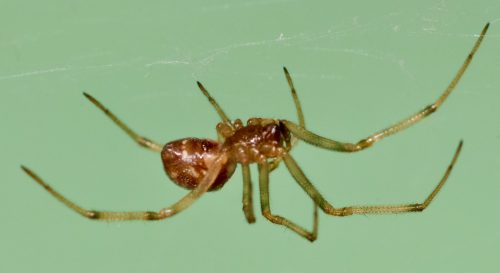Another day in the lab, waiting for spiders to hatch out. They keep teasing me. While I was looking for egg sacs, though, this guy stood out. That’s a chonky big Steatoda borealis.
Note the light horizontal band across the front of the abdomen, and the hint of a midline stripe, all against a darkly pigmented body. These are true native spiders, found in the northern US in the midwest and east, and also in Canada. Parasteatoda tepidariorum is, apparently, also native to North and South America, but has spread all around the world, unlike these stay-at-homes.
S. borealis is also more stocky than P. tepidariorum. Here’s the latter to remind you what they look like.
Now I’ve got to wonder what has made S. borealis so well-tuned to these places with snowy winters.




So I guess the book is still on the backburner.
Without the legs, they’d look like plump ants or termites, not frightening at all. Add the legs, and they scare the hell out of me.
Yup, that’s a chonker.
Is there a chonk chart for spiders?
https://1.bp.blogspot.com/-UY1eg_E-M3k/Xf75c-HugNI/AAAAAAAAtXY/Wf6dyJC1jLES9QpTnzNIVQEf4_3ItF67gCLcBGAsYHQ/s1600/holy%2Bcow.jpg
Best photo i have seen all year ,hahahahaha.
The clew is in the name. Aurora borealis is also usually only seen in similar regions. Therefore, S. borealis must be an inhabitant of Aurora borealis.
This suggests the experiments, instead of being done on students (who are a bit alien) will now be done on actual aliens.